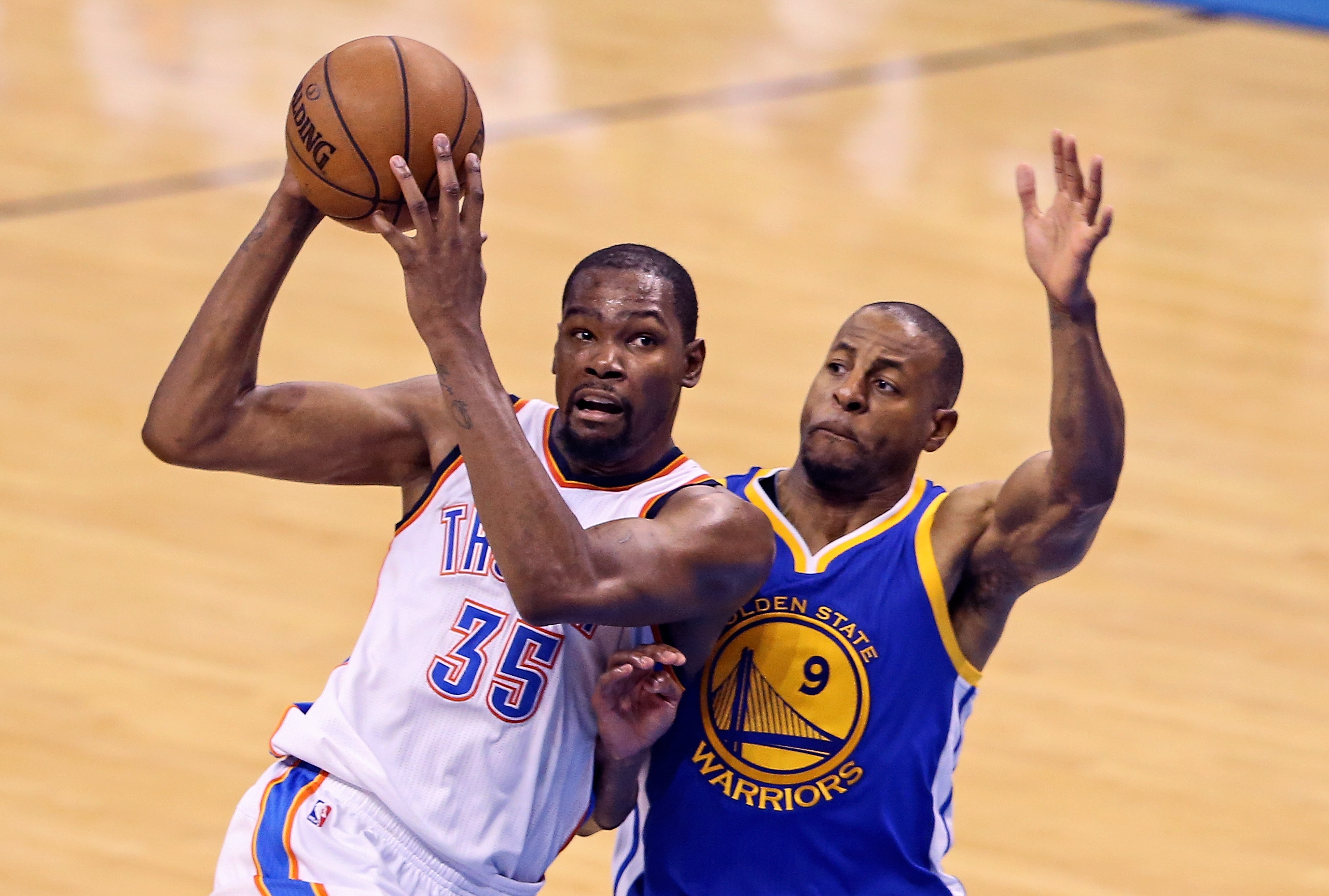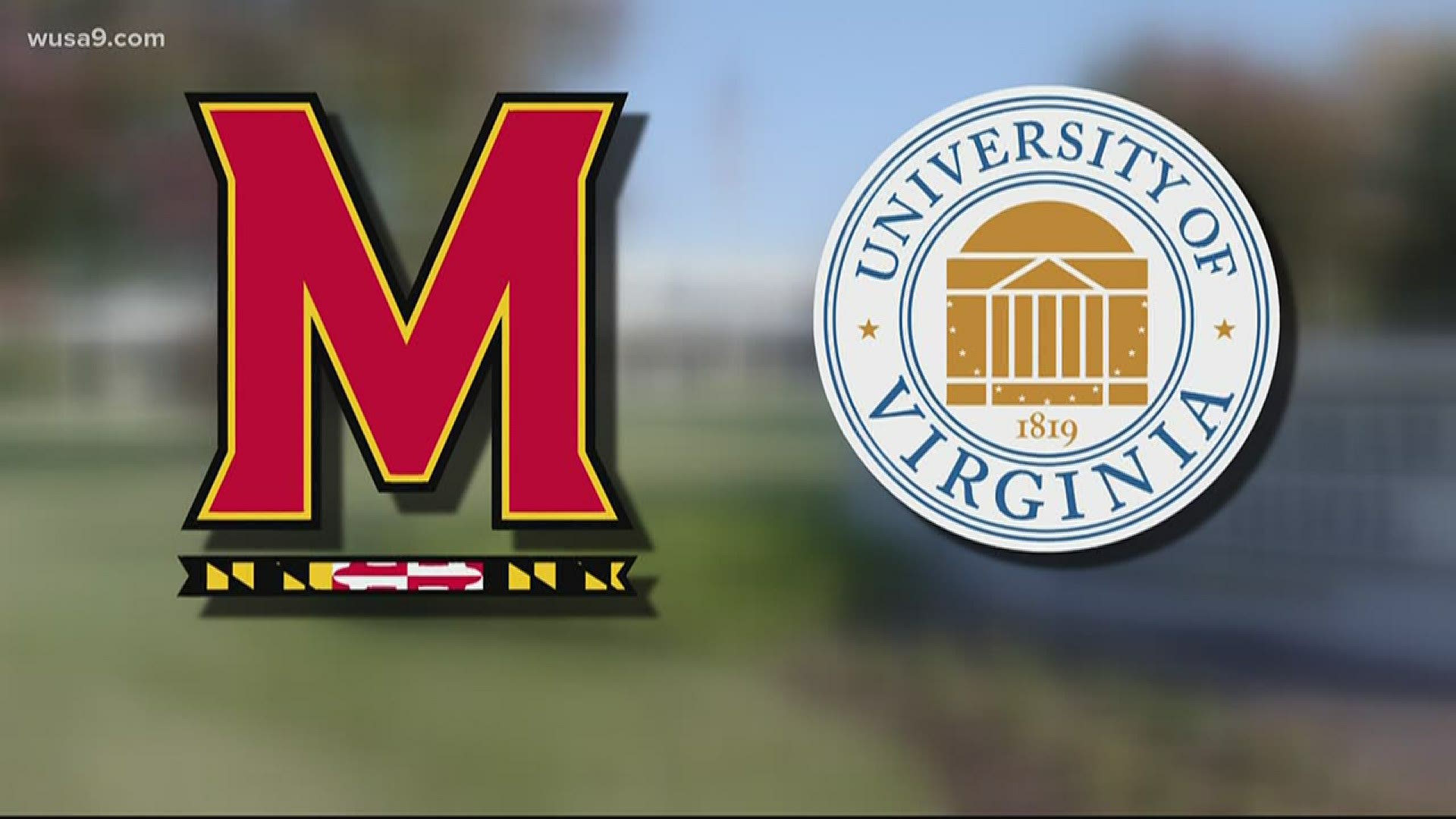![Kevin Durant Andre Iguodala [image : 86686318]](http://www.gannett-cdn.com/media/2016/07/04/USATODAY/USATODAY/636032506979712931-c04-jump-27.jpg) Kevin Durant didn't go anywhere.
Kevin Durant didn't go anywhere.
The basketball brand you knew, the guy who built everything from the ground up for the Thunder in an Oklahoma City community that he once called "the perfect place for me," is now part of a Golden State Warriors team that is more dangerous than any other. The image is gone, that unique niche he had as one of the NBA's few legacy players who could end his career with the same franchise with which he began it.
But this is the same player, the same person - on a different team.
So how did this happen? Why did Durant – the 27-year-old whose decision made on Monday is on par with LeBron James’ exodus to Miami in terms of free agency shockers – head to The Bay to join forces with Stephen Curry, Klay Thompson, Draymond Green & Co?
To win titles, and be the best player he can be. Yes, it’s just that simple.
Backlash be darned, Durant made the tough choice. And say what you will about the Thunder’s title chances with Durant back in the fold – and they were fantastic – there’s just no avoiding the fact that the Warriors presented a chance to have a super team that is stacked in ways we haven’t seen in quite some time.
The Warriors had been hearing that Durant had eyes for their franchise for a while. Part of it is was their style of play, with coach Steve Kerr finding a way to make it all look so much easier than the isolation-heavy way of the world in Oklahoma City alongside Russell Westbrook. Part of it was relationship-based, with Durant growing close with Warriors players in recent years – none more so than Curry and super sixth man Andre Iguodala during the FIBA World Championships in 2010.
In an attempt to pull the curtain back on this league-altering move, we share the most interesting rumblings – by way of people involved in the process – in the wake of Durant’s decision.
• The Jerry West phone call really made a difference.
“The Logo,” as the NBA legend/Warriors executive board member/part owner is informally known, had a phone conversation that lasted approximately 30 minutes with Durant on Saturday. The Warriors had asked Durant if he wanted to talk to West, and he obliged.
And how’s this for unexpected? West never once told Durant that he should sign with the Warriors. Instead, in what was clearly a theme of Durant’s decision-making process, they discussed what was best for his growth and happiness as a player.
West was supposed to talk to Durant on Friday from his Los Angeles area home, after the Warriors’ in-person meeting with the former Thunder star in the Hamptons. But they connected a day later, and it’s clear that West’s message resonated. West and Durant have become friendly over the years, but it’s not as if they have some close relationship from the past. It was just two greats from different generations talking hoops, and it worked.
As Ailene Voisin of The Sacramento Bee noted on Twitter on Sunday, this isn’t the first time West helped close a deal like this.
“One reason OKC folks should be nervous about Durant phone chat with GSW advisor Jerry West: The Logo closed the deal for Shaq-to-LA in ‘96.”
There’s this subtext, too: Warriors owner Joe Lacob – who rubber-stamped the West hire back in May 2011 after Warriors media relations guru/former Lakers PR staffer Raymond Ridder facilitated the connection – deserves credit for the assist. Always outspoken and never lacking bravado, Lacob was brutalized in recent months for telling the New York Times Magazine that the Warriors were “light years ahead” in how they ran their organization.
It was a foolish thing to say, not only because circumstance has played a major part in their success but because it’s the kind of thing you just never actually say. Still, West’s presence played a major part. And for an organization that was seriously lacking league-wide credibility back when Lacob and the other new owners took over in the summer of 2010, it was nothing short of a brilliant move to bring him into the fold.
• The Warriors’ meeting with Durant on Friday lasted for a little more than two hours, and it went a little something like this…
First hour: Management and coaching staff took center stage, with Durant quietly listening for most of the time while general manager Bob Myers, coach Steve Kerr and Lacob painted a picture of what Durant could expect and how they’d try to take over the NBA in years to come. The Warriors were struck by one thing early: Durant, quite clearly, was concerned with the PR hit he would likely take by leaving the Thunder behind to join the team that had beaten him in the Western Conference Finals. He didn’t want to be seen as a villain, and wanted to know how they saw that sensitive part of this whole picture.
Their sense, from there until the end, was that he wanted to join the Warriors but may not have the stomach to actually go through with it.
But the second hour of the meeting was key, as Curry, Thompson, Green, and Iguodala had a players-only meeting of their own that also appears to have played a pivotal part. As ESPN’s Ethan Sherwood Strauss noted, Curry, Iguodala and Durant all bonded during chapel sessions that summer. Iguodala’s words appears to have left a mark.
It was like they were already sharing a locker room at Oracle Arena.
• Durant said all along that this would be a basketball decision, meaning the financial factor didn’t loom quite as large as the Thunder hoped. And while he loses money by picking his path, it’s not quite as much as it might seem. It helps, too, that he signed 10-year, $300 million deal with Nike in Sept. 2014.
Money, in other words, is hardly a concern in this case.
Had Durant stayed in Oklahoma City on a one-year deal, then signed a five-year deal next summer in order take advantage of the salary cap that is expected to jump from $94 million next season to $107 million in 2017-18, he would have made a combined $229 million in those six seasons (“home” teams can given 7.5% raises, as opposed to 4.5% for everyone else, and five-year deals as opposed to four). Yet while Durant’s combined total salary will be approximately $177 million if he signs a four-year deal with the Warriors next summer, the actual difference in earnings by the time the summer of 2021 rolls around will be approximately $7 million.
Health permitting, he’ll still be one of the league’s highest-paid players at the age of 32, when he’ll likely be looking to recoup that one guaranteed year that got away.
• There’s another familiar face waiting for Durant in The Bay: Warriors assistant coach Ron Adams, the defensive guru who was with him in Oklahoma City from 2008 to 2010.
The two have a fantastic relationship, one that continued from a distance after Adams left for the Chicago Bulls six summers ago. Before games between the Warriors and Thunder the past two seasons, Adams and Durant would routinely visit. Whether it was just a half-hug or a brief visit, it was quite evident that there’s a mutual respect there that should help them going forward.
After Game 7 of the Western Conference Finals at Oracle Arena, when the Warriors’ comeback from a 3-1 deficit to the Thunder was complete, Adams stopped Durant on his way back to the visitor’s locker room to make sure Durant knew how proud he was of the player he had become. Durant is a born scorer, but his defensive improvements have come progressively over the years. And that, more than anything else, was something that Adams wanted Durant to know that he had noticed.
• Thunder fans have every right to be disappointed, angry even, but they don’t call it “unrestricted” free agency for nothing. Oscar Robertson fought for this right when he took on the NBA in 1970, and it was fitting in a way that Durant decide to leave Oklahoma City behind on Independence Day.
What’s more, Durant was classy until the end. He called Thunder general manager Sam Presti just minutes before announcing his decision on “The Player’s Tribune” web site, and the two had what was described as an emotional, but brief, chat.
Presti’s first, best move was drafting Durant No. 2 overall out of Texas in 2007, when the then-29-year-old was just three weeks into his new job as Seattle SuperSonics general manager. And now, with Durant gone and Russell Westbrook’s uncertain future looming large around the corner, he’s faced with the kind of rebuilding task he hoped so badly to avoid. Remarkably, they have a very good team even without a player of Durant’s stature.
The Thunder felt good about their chances of retaining Durant until the end drew near. Westbrook and Durant had kept up frequent communication, and even went to recent dinners with longtime Thunder teammate Nick Collison.
The salt in the wound for Oklahoma City? Had Durant given a verbal commitment to return to the Thunder, they were very confident that fellow free agent Al Horford would have come too. Horford, the 30-year-old forward who agreed to sign with the Boston Celtics, played under Oklahoma City coach Billy Donovan during his University of Florida days.


